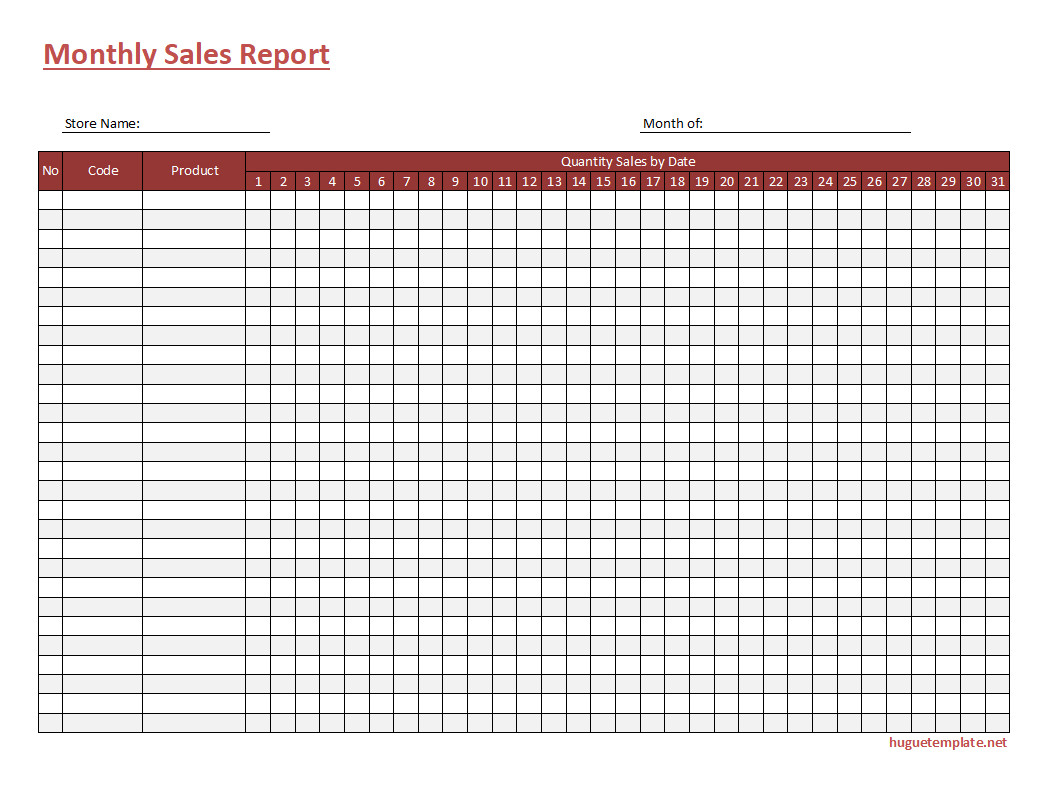
A monthly sales report is a document that summarizes the sales activities and results of a company over a specific month. It provides insights into the performance of the sales team, identifies potential areas of improvement, and helps evaluate the effectiveness of sales strategies. The report typically includes key metrics such as total sales revenue, number of new customers, sales conversion rates, and individual sales rep performance.
The primary purpose of a monthly sales report is to provide a comprehensive analysis of sales activities within the business. It serves as a valuable tool for management, allowing them to make data-driven decisions, identify trends, and set realistic sales targets for the future.
Benefits of Sales Reporting
Sales reporting offers numerous benefits for businesses of all sizes. Here are some key advantages:
- Performance Evaluation: Monthly sales reports enable businesses to assess the performance of their sales team and individual sales representatives. By analyzing key metrics, management can identify top performers, recognize areas needing improvement, and provide targeted training and support.
- Identifying Trends and Patterns: Sales reports help identify trends and patterns in customer behavior, product preferences, and market demand. This information can be used to adjust sales strategies, optimize product offerings, and target specific customer segments more effectively.
- Goal Setting: By analyzing historical sales data, businesses can set realistic sales targets for the future. A monthly sales report provides insights into the company’s sales performance and helps management establish achievable goals and objectives.
- Tracking Sales Funnel: Sales reports track the progress of sales prospects through the sales funnel. By comparing conversion rates at each stage, businesses can identify bottlenecks and take necessary actions to improve the efficiency of their sales processes.
- Identifying Opportunities and Threats: Sales reports highlight potential opportunities and threats in the market. By analyzing the data, businesses can identify emerging trends, competitive challenges, and market gaps, allowing them to adjust their sales strategies accordingly.
- Improved Decision-Making: Sales reports provide management with accurate and up-to-date information, enabling better decision-making. By having a clear overview of sales activities and performance, businesses can make informed decisions on resource allocation, budgeting, and strategy development.
The Key Elements Of A Monthly Sales Report
A well-structured monthly sales report should include the following key elements:
- Executive Summary: This section provides a concise overview of the sales performance for the month. It includes key metrics such as total revenue, number of new customers, and sales growth compared to the previous month or year.
- Sales Performance Analysis: This section delves deeper into the sales performance, analyzing key metrics and trends. It includes details on sales revenue by product or service, sales volume by region or market segment, and a comparison of actual sales versus targets.
- Sales Funnel Analysis: This section focuses on the sales funnel, tracking the conversion rates at each stage. It highlights the number of leads generated, leads converted into opportunities, opportunities turned into sales, and any drop-offs or bottlenecks in the process.
- Individual Sales Rep Performance: This section evaluates the performance of individual sales representatives. It includes metrics such as the number of leads generated, the number of deals closed, average deal size, and sales revenue contribution.
- Customer Analysis: This section provides insights into customer behavior and preferences. It includes metrics such as customer acquisition cost, customer lifetime value, customer churn rate, and customer satisfaction scores.
- Recommendations and Action Plan: This section outlines recommendations based on the analysis of sales data. It provides actionable insights and suggestions for improving sales performance, addressing challenges, and capitalizing on opportunities.
How To Write A Monthly Sales Report
Writing an effective monthly sales report requires careful planning and attention to detail. Here are some key steps to follow:
- Define Objectives: Start by defining the objectives of your sales report. What insights do you want to gain? What questions do you want to answer? Having clear objectives will help you structure your report and focus on the most relevant data.
- Collect Relevant Data: Gather all the necessary data for your report. This may include sales data from your CRM system, customer feedback, and market research. Ensure that your data is accurate, complete, and up-to-date.
- Analyze and Interpret Data: Once you have collected the data, analyze and interpret it to identify key trends, patterns, and insights. Use visualizations such as charts and graphs to present the data clearly and engagingly.
- Structure Your Report: Organize your report into sections based on the key elements mentioned earlier. This will help readers navigate the report easily and find the information they need quickly.
- Provide Context and Commentary: Provide context for the data by adding commentary and explanations. Explain the reasons behind the trends and patterns you have identified and highlight any significant findings or outliers.
- Include Actionable Recommendations: Based on your analysis, provide actionable recommendations for improving sales performance. These recommendations should be specific, measurable, achievable, relevant, and time-bound (SMART).
- Proofread and Review: Before finalizing your report, proofread it for any grammatical or spelling errors. Review the report to ensure that it is well-structured, coherent, and easy to understand.
By following these steps, you can create a comprehensive and impactful monthly sales report that provides valuable insights and drives business growth.
Free Monthly Sales Report Template!
Track your sales performance effortlessly with our free monthly sales report template, available in Excel format!
Perfect for businesses of all sizes, this template allows you to organize data, analyze trends, and monitor your sales progress month by month.
Stay on top of your sales metrics with ease and precision!
Monthly Sales Report Template – Excel

I am Huguette Prudence, the writer and curator of this website. With a profound passion for writing and reading, I strive to create insightful and engaging content. My background includes managing a small online shop and overseeing a business website, experiences that have honed my skills and broadened my understanding of effective online communication. Thank you for visiting Huguetemplate.net, where I aim to share knowledge and inspiration through carefully crafted content.